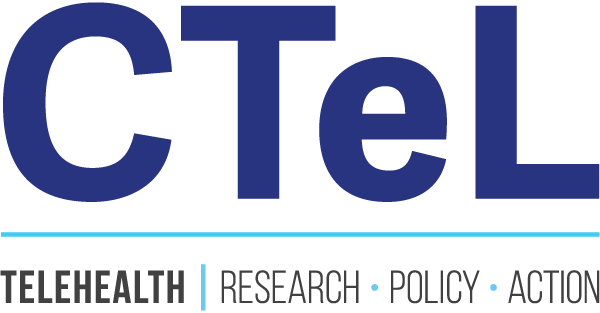CTeL RPM Summit Highlights—AI’s Game-Changing Role in Remote Patient Monitoring
Last week, CTeL (Center for Telehealth and e-Health Law) hosted a transformative discussion on AI and Machine Learning (ML) integration in Remote Patient Monitoring (RPM) at its Third Annual Virtual RPM Summit. This year’s session titled "AI and Machine Learning in Remote Patient Monitoring" brought together Dr. Ravi Parikh, medical oncologist at Emory University, and Dr. Fei Wang, professor and director of AI for Digital Health at Weill Cornell Medicine. Both experts shared actionable insights on the opportunities, challenges, and urgent need for standardized practices in AI-driven RPM.
AI's Impact on Patient Care and RPM
Dr. Parikh kicked off with three core areas where AI elevates RPM: communication, data collection, and predictive analytics. “At my clinic, we’ve implemented bidirectional chatbots to support patients during chemotherapy, tracking symptoms and enabling real-time communication with providers,” he said, highlighting the critical role of AI in engaging patients and refining treatment plans. He emphasized that “passive monitoring with wearables allows us to capture real-time performance data,” providing an unparalleled view into patient health outside the clinic.
Dr. Parikh emphasized that “passive monitoring with wearables allows us to capture real-time performance data,” providing an unparalleled view into patient health outside the clinic.
Dr. Wang added that AI extends RPM’s utility beyond mere monitoring. “From precise disease diagnosis to tailored treatments, AI can transform patient care by continuously analyzing data,” he said, underlining AI’s capability to help providers proactively manage patient recovery and monitor treatment outcomes.
Tackling Data Quality, Privacy, and Ethical Complexities
With RPM systems generating high volumes of patient data, both experts stressed the need for robust data quality and privacy protections. Dr. Wang pointed out the technical hurdles AI faces with RPM data, often containing inconsistencies and noise. “We must be mindful of data quality—RPM data is unique and requires different processing than traditional clinical data,” he cautioned. “And as we capture more data, the risk of unauthorized access to sensitive information increases, especially when monitoring patients at home. Privacy and security become critical.”
“We must be mindful of data quality—RPM data is unique and requires different processing than traditional clinical data,” he cautioned.
Dr. Parikh echoed these concerns, particularly around clinician liability and the regulatory frameworks governing AI in healthcare. “Currently, the legal framework places responsibility on clinicians for AI outputs, even though the technology itself could be flawed,” he said. This can create hesitation among clinicians, who may ignore RPM data due to “alert fatigue” from an overload of unfiltered data points. To counteract this, he advocated for validated AI tools with FDA clearance and user interfaces that translate complex data into actionable insights.
Collaboration and Standardization: A Blueprint for Effective AI Integration
As AI and RPM converge, Dr. Parikh and Dr. Wang emphasized the importance of standardized processes. Dr. Wang urged AI developers to focus on user interfaces and regularly update models to keep up with evolving data patterns and disease trends. “Models need consistent monitoring and retraining to stay relevant,” he explained. “These models require ongoing monitoring and retraining to account for changes in disease patterns and patient demographics,” he explained, calling for long-term algorithm evaluation and adjustments.
Dr. Parikh echoed the need for “multi-stakeholder testing and rapid-cycle user design” to ensure AI tools address clinician needs, adding that autonomous AI could soon play a role in real-time diagnostics without clinician oversight. “Too often, developers focus on the algorithms themselves rather than on how the data is presented to end-users,” he noted, underscoring the need for AI that enhances clinician workflows, not complicates them. He added that AI-based automation, such as real-time arrhythmia monitoring, could potentially eliminate the need for clinician review, increasing both speed and accuracy in patient care.
“Too often, developers focus on the algorithms themselves rather than on how the data is presented to end-users,” said Dr. Parikh
Building Transparency: Model “Nutrition Labels” and Checklists
Both experts recommended transparency in AI tools with “nutrition labels” describing each tool’s functionality, data sources, and clinical applications to help healthcare providers and investors make informed choices. “A checklist that covers technical, medical, and compliance standards could help reduce risks and improve trust,” Dr. Parikh noted.
CTeL Executive Director Christa Natoli affirmed the need for these standards, adding, “We aim to provide healthcare systems with clear guidelines for selecting HIPAA-compliant, validated AI tools. Our collaboration with experts like Dr. Parikh and Dr. Wang is essential to achieving this.”
CTeL Executive Director Christa Natoli affirmed the need for these standards, adding, “We aim to provide healthcare systems with clear guidelines for selecting HIPAA-compliant, validated AI tools. Our collaboration with experts like Dr. Parikh and Dr. Wang is essential to achieving this.”
The Road Ahead: Actionable Recommendations for the Industry
Dr. Wang and Dr. Parikh proposed key action items to advance AI’s responsible integration into RPM, including creating industry-standard checklists covering validation, regulatory compliance, privacy, and user design. “Unified guidelines and model ‘nutrition labels’ are crucial to guide informed decisions,” said Dr. Wang. They also advocated for collaboration across the field and ongoing evaluation through CTeL’s Blue Ribbon AI Collaborative, emphasizing that coordinated efforts will lead to transparent, effective, and safer AI practices.
In closing, Dr. Parikh and Dr. Wang reiterated the value of industry-wide alignment on these priorities, calling for continuous stakeholder engagement and rigorous testing to ensure AI-driven RPM truly enhances patient care.

